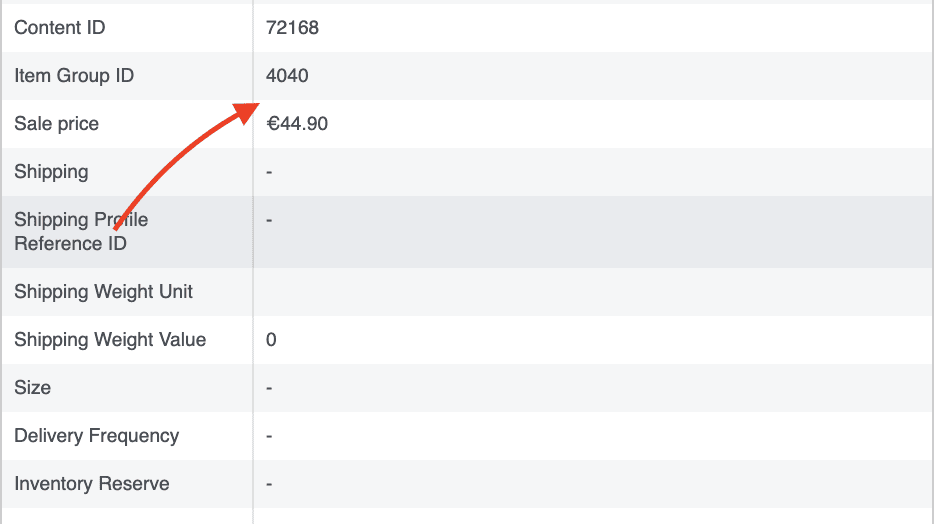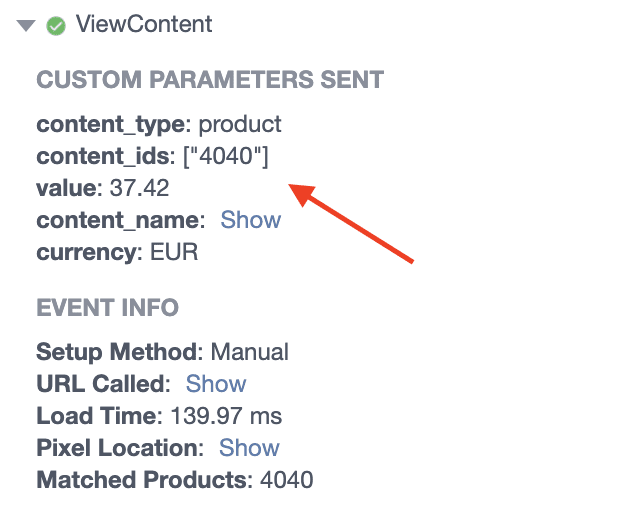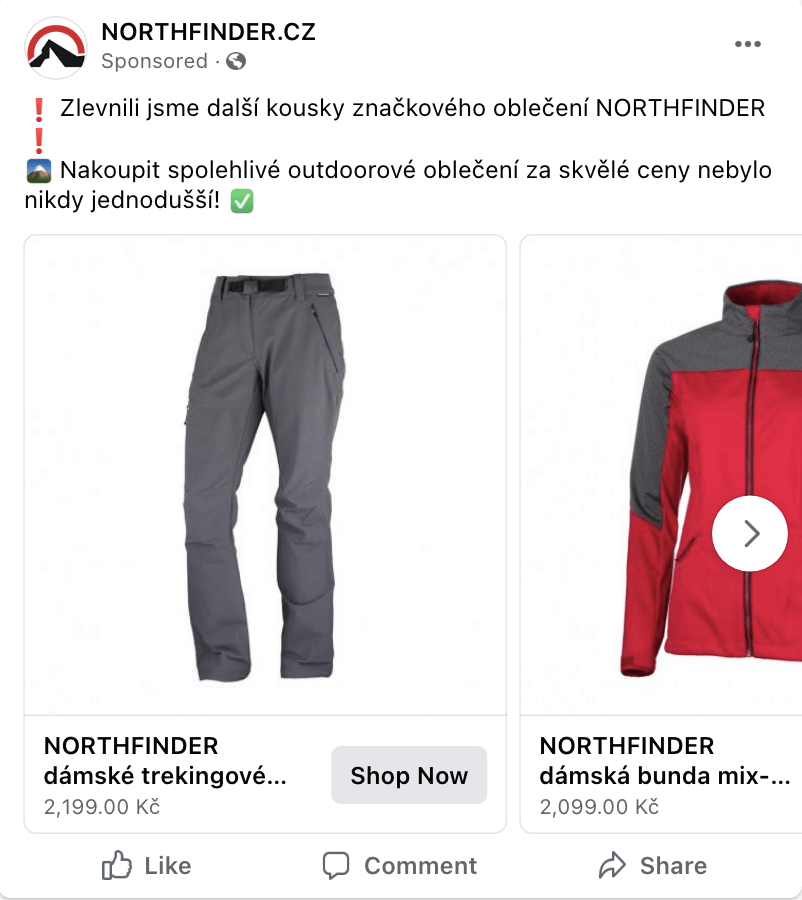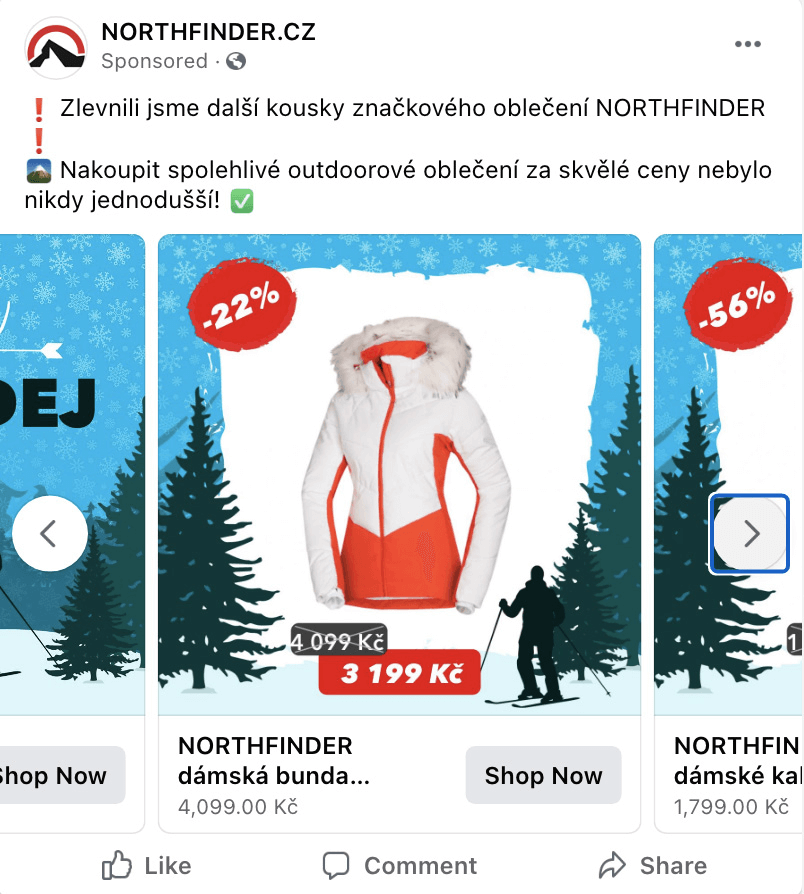
Obsah
Missing or Incorrect FB Pixel Code Settings
The alpha and omega of success on Facebook are setting up the track codes correctly on the client’s website. When we look at our new clients’ codes, we almost always find incorrect settings. How to set up facebook pixel code?
The algorithm that Meta offers is probably the best of any available on the market. Equally unsurpassed is the quality of user data that the social network has at its disposal. For this algorithm to work properly, it needs to receive the right data, and it should receive as much of it as possible.
Facebook PixelThe Facebook Pixel is a measurement code which, when placed on a website, sends analytical data to the Facebook ad manager. You can use it to track tr… More allows you to set up to 8 unique Facebook events that are designed to send information about user behaviour on the website.
Attention! Facebook Pixel doesn’t just collect data about users who came to the website through ads, but about every visitor.
Facebook events
There are 3 basic Facebook events that every eshop must have in place.
- View Content: This event takes place when a user views the details of a particular product,
- Add to Cart: This event takes place when a user adds a product to their basket. A common mistake in the settings is that the e-shop triggers this event only when the user opens the cart,
- Purchase: an event that is triggered after the order is completed. We register the most errors with this event. The event is often not triggered until the user pays the order on the payment gateway or it is triggered before the order is completed.
Facebook offers several different events that you can set up on the website. Their use depends on your specific business strategy.
It’s important to make sure your events are sending you the right data.
Product Feed
The topic of product feed is closely related to the previous point. Even if you have data that you can read, you are aware of when it should be sent and what it should contain, but you don’t have a product feed on Facebook, the social networkWhen were the first social networks created and which network was Facebook inspired by? Which networks are among the biggest in 2023? More can’t connect to data and they are useless to you.
The basic setup that needs to be done is to connect the product feed with the Facebook Pixel, which is located on the website. This will create a “data bridge” between Facebook and your website.
Product ID
Always check that the product IDs sent from the website match the product IDs in your feeds. When we open a product in the feed…

…and see what product ID Facebook sends us from the eshop…

Source: Internal materials
…ID must always be identical. We recommend using Facebook Pixel Helper to verify Facebook events, so you can check what data Facebook is sending you.
There is no perfect feed, and some products in your feed could be rejected by Facebook. Facebook uses an algorithm that monitors whether your products violate Facebook’s advertising policy. Since the algorithm often makes mistakes, you need to monitor this information regularly and send any rejected products for manual review.
Facebook Advertising Offers Many Formats – Don’t Use Them All
Moving on from technical issues to creative design. Facebook advertising offers us 3 different formats:
- 1000×1000: the most used (square) format,
- 1200×628: horizontal format,
- 1080×1920: the latest “Story” format.
For banner campaigns, we always recommend using the square format and at least one of the aforementioned formats. However, not all formats work the same everywhere – test to see which is best for you.
One video to rule them all
Noticeably missing element in campaigns is video. Video advertising can be distributed to a wide target audience for little money, allowing you to target users who are intrigued by your video. With video, you need to account for higher production costs.
Dynamic product ads will help you
The backbone of Facebook advertising is product campaigns, also known as “dynamic product ads”. These are ads that are automatically generated from your feed and are tailored to each user. You choose which products you want to show in your ads (always choose from products that are in stock).
As long as the product feed is set up correctly, Facebook can find users who are currently interested in the product. This is especially advantageous for eshops whose product portfolio is composed of more than 100 products.
The collection format is often forgotten, and this is its biggest advantage. It is extremely important to visually separate your brand from others. To set up the Collection format, you’ll need a square banner and a product feed. With this type of ad, you have to take into account that its display is only allowed on mobile.
(Not) working with the audience
This is an issue that affects all advertising, not just that delivered by Facebook ad campaigns. Try to put yourself in the customer’s shoes. Each of us is a customer in our private lives – and nowadays – a significant online customer.
The 4 basic settings of your customers:
- The customer has been to your eshop but hasn’t made a purchase
- The customer has purchased in your eshop
- The customer doesn’t know your website but is interested in the products you sell
- The customer does not know your eshop or your product
This is a very simple division. However, it’s worth taking a closer look at each group.
1. The customer has been to your eshop but did not make a purchase
This is the most important user group you’ve already spent money to get on the web. So why let them leave?
One of the most common reasons for leaving is everyone’s buying process, but also the characteristics of the product itself.
For cheaper products, the final decision to buy can take several hours or even several days. In this case, short-term marketing and getting it right is very important.
2. The customer has purchased in your eshop
While it is great that the customer has completed the order, the journey of a successful eshop is just beginning.
In most cases, you have room to further target these people. This could be targeting accessories to the product they have purchased from you (for example, if you sell bicycles, you can target customers through bike helmets, jerseys or trunks), or if it’s a consumer product, you can target the customer again after some time. If they were happy with their purchase, they will be happy to come back.
3. The customer is not familiar with your website but is interested in the products you sell
This group of people is likely to be the largest in your case as well. These are the people who are planning to buy one of your products in a given situation, for example, an LG TV.
Perhaps we all count on the fact that we have to beat the competition. If you want to target these potential customers, you need to communicate the benefits that buying from you will offer them. It could be free shipping, extended warranty, in-home installation and take-out, fast delivery, and of course, if the state of the market allows it, your price.
However, keep the first point in mind – customer decisions take time. Even a €5 hand cream can take a customer several days to consider. The goal of reaching this audience is not an immediate sale, but a chance to engage them and allow them to think (while putting them in the number 1 group).
4. The customer doesn’t know your eshop or your product
The most difficult group of customers. This audience has no idea that you and your product exist. In this case, the entry point of your marketing strategy is first and foremost to attract and draw attention to the fact that you have a product that solves one of the customer’s problems.
Gradually, you can educate people about your product and progress with them to the aforementioned, more favourable groups.
Incorrect Evaluation of Campaigns
Without proper campaign evaluation, you’re doing things blindly and don’t know if they’re actually making you a profit. Every campaign has a different objective, which depends on the audience, product and buying phase it’s in.
For example, with ecommerce, you immediately think that the goal of the campaign will be customer orders – which is of course true – but you can’t always achieve that and still evaluate the campaign as unsuccessful.
In this case, the purchase (and the number of sales) should be the main goal of all campaigns. You can also choose smaller sub-goals such as – adding to cart, time spent on site, newsletter sign-ups and so on. Thus chosen “smaller goals” as a whole can bring high turnover.
We recommend choosing turnover (excluding VAT) and AcoS (cost to turnover ratio) metrics as the main campaign goal, so you can realistically measure the profitability of your store.
We encounter that the client is interested in the price per 1 order. Yes, this is an important statistic and is often worked within micro-optimisation, but it should not be overestimated.
Examples:
- Eshop #1 has an average order value of €20, its price per order is €2, its resulting ACoS is 10%. This means that for €1 of turnover the marketer has to invest 10 cents in advertising,
- Eshop #2 has an average order value of €60, the price per order is €4, so its resulting NPV is 6.66%.
If we look at the results in terms of price per order, we see that eshop #1 is more efficient. However, the truth is quite the opposite, as eshop #2 has lower costs, thus it makes a higher profit and margin share of the product.
Be Different with Your Graphics
On Facebook, you’re not just fighting competitors who are directly related to you and sell the same or similar products, but anyone who is targeting your potential customer. One user sees a lot of ads (fashion, cars, holidays, etc.) during their session on social media. Even if it’s a different end product, these are your competitors.
Your big advantage is that if the user sees a change, a difference from the monotonous ads of other companies.
Don’t skimp on the graphics of your banners, videos and text of your ads. The more imaginative your content is, the more chances to captivate the user and ultimately, your costs go down. You’re also favoured over your competitors, as Facebook rates your ads as more effective and the price goes down.
The most common ads you’ll see on social media are dynamic product campaigns, which Facebook composes directly from your eshop. This is a Carousel format where the user can scroll through the products that Facebook has created directly for them based on the data available to them.
They look like this:

Facebook advertising – product campaign preview
The user sees the product image, name and price pulled directly from the client’s eshop. This type of ad can be seen by most users and graphically doesn’t stand out from the crowd.
Thanks to the ROI Hunter service we work with, we can make this type of ad significantly more effective and engage users much more. All it takes is a clever graphic designer and the same campaign can look like this:

Preview product ads with ROI Hunter
ROI Hunter, a few minutes of work by a skilled graphic designer and the ad will undergo a significant change. It is laid thematically and already at first glance unique and different from other ads.
Grow Beyond
To properly prepare Facebook advertising for your brand, stick to a set of steps optimised for new conversions that will bring you profit. If you need help, don’t hesitate to contact us and take advantage of our smart tools and exclusive partnerships.
Thanks to the Dexfinity Editorial Staff for Creating This Article
Author: Marek Ďuračka
Editor: Veronika Svajčiaková, Martin Bartl
Translator: Mária Streďanská
Feedback, Published by: Petra Dudášová
DIRECT CONTACTS
Let's Join Forces!
Show us your project and we will talk about its growth potential.

Pavol Adamčák
Executive Director
+421 918 435 105
pavol.adamcak@dexfinity.com

Vladimír Nociar
Head of Business Development team
+421 903 568 464
vladimir.nociar@dexfinity.com
Choose what you are interested in and feel free to mark multiple choices.


